Text: Adel Kim
Photo: Anastasia Bogomolova, from the flickering series A Place for Gesture, 2022.
Images were created for Reside/Sustain project
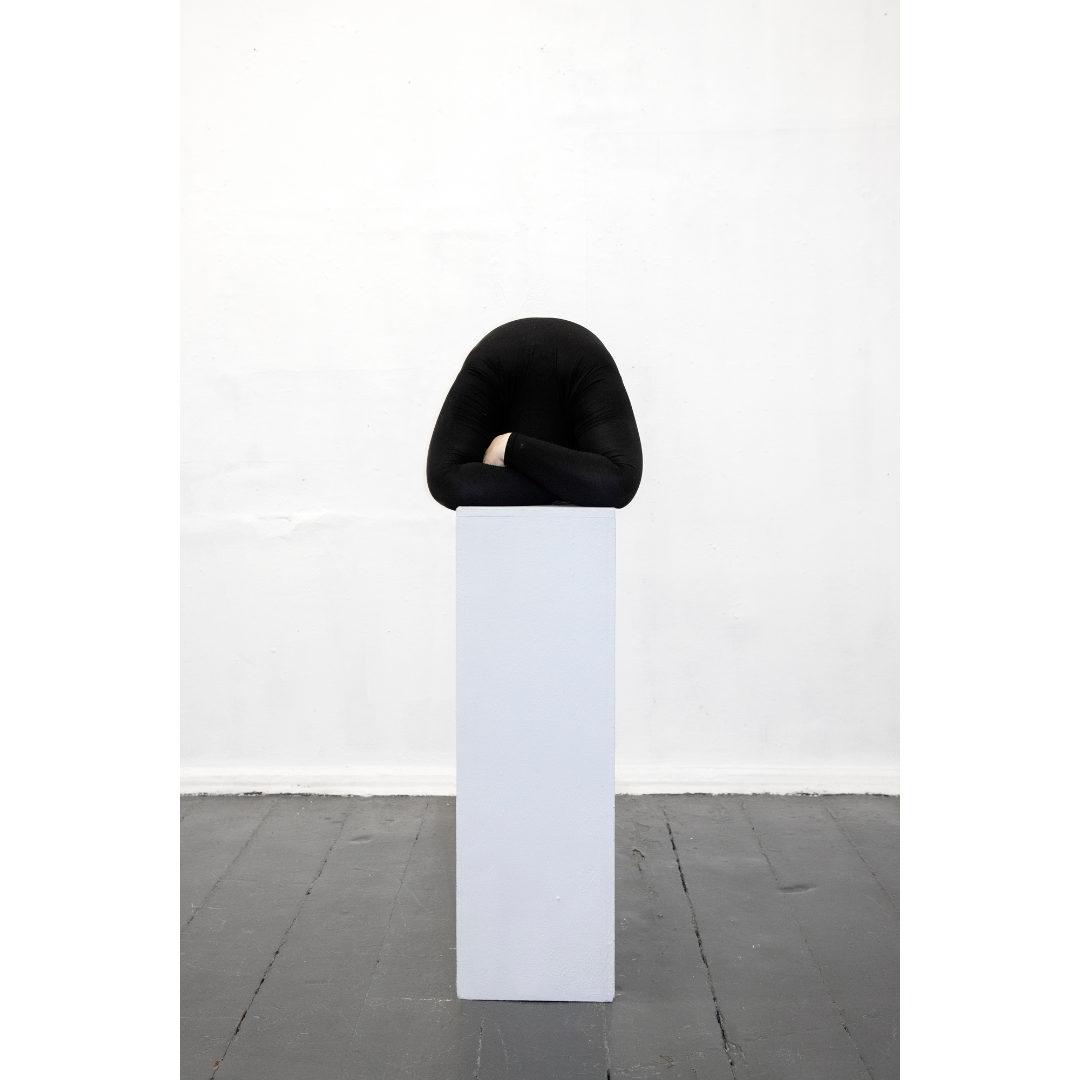
Text: Adel Kim
Photo: Anastasia Bogomolova, from the flickering series A Place for Gesture, 2022.
Images were created for Reside/Sustain project
This text continues a series of conversations with Russian artists who find themselves in a different array of life and residential circumstances after the start of Russia’s aggression in Ukraine.
Anastasia Bogomolova is an artist and researcher working with performative practices and documenting the process through installations, photography, sculptures, video, sound, and text. In her projects, Anastasia turns to the imitation of everyday rituals and studies mimicry as a theme, method, and visual language. Her research also focuses on the flexible nature of memory and oblivion, as well as on the depiction of traces. The attention to the image of trace comes from her fascination with events that may be preserved in conditional outlines or are not seen as events anymore.Anastasia is a winner of Present Continuous 2021-competition (initiative of V–A–C and Museum of Contemporary Art, Antwerp), finalist and grant recipient of the Nova Art 8 competition (2021), two-time scholarship holder of the Garage Museum of Contemporary Art grant programme for young artists (2017 and 2018), winner of the Credit Suisse & Cosmoscow Prize for Young Artists (2016). Participant of art residences in Russia, Switzerland, and Sweden. Author of the Telegram channel ”Mistakes of a Resident”.
Anastasia Bogomolova lives and works in Yekaterinburg.
The conversation took place on the 8th of September 2022 via Zoom.
Adel Kim: What was your practice before, and what changed after the 24th of February?
Anastasia Bogomolova: Funnily enough, yesterday I experienced some sort of yet another crisis (does not sound so funny, though). I was invited to give a talk about making a CV and portfolio, and I decided to update mine as well. Having gone through my statement and looked at the portfolio, I realised it does not apply anymore. The things that have been happening after the breakout of war do not allow me to analyse what I am doing currently. During the last 4 months, I have been working on a video performance that is very important to me. It does not fit the description of what I used to do before, and I find it hard to define myself through it.
Before the war, I described myself as an artist who works with performative practices in their various manifestations: in relation to material, topic, form. The medium for these practices differs from photography, installation, and video to audio, text, and sculpture. There were no limits, apart from my skills and willingness to master a particular tool.
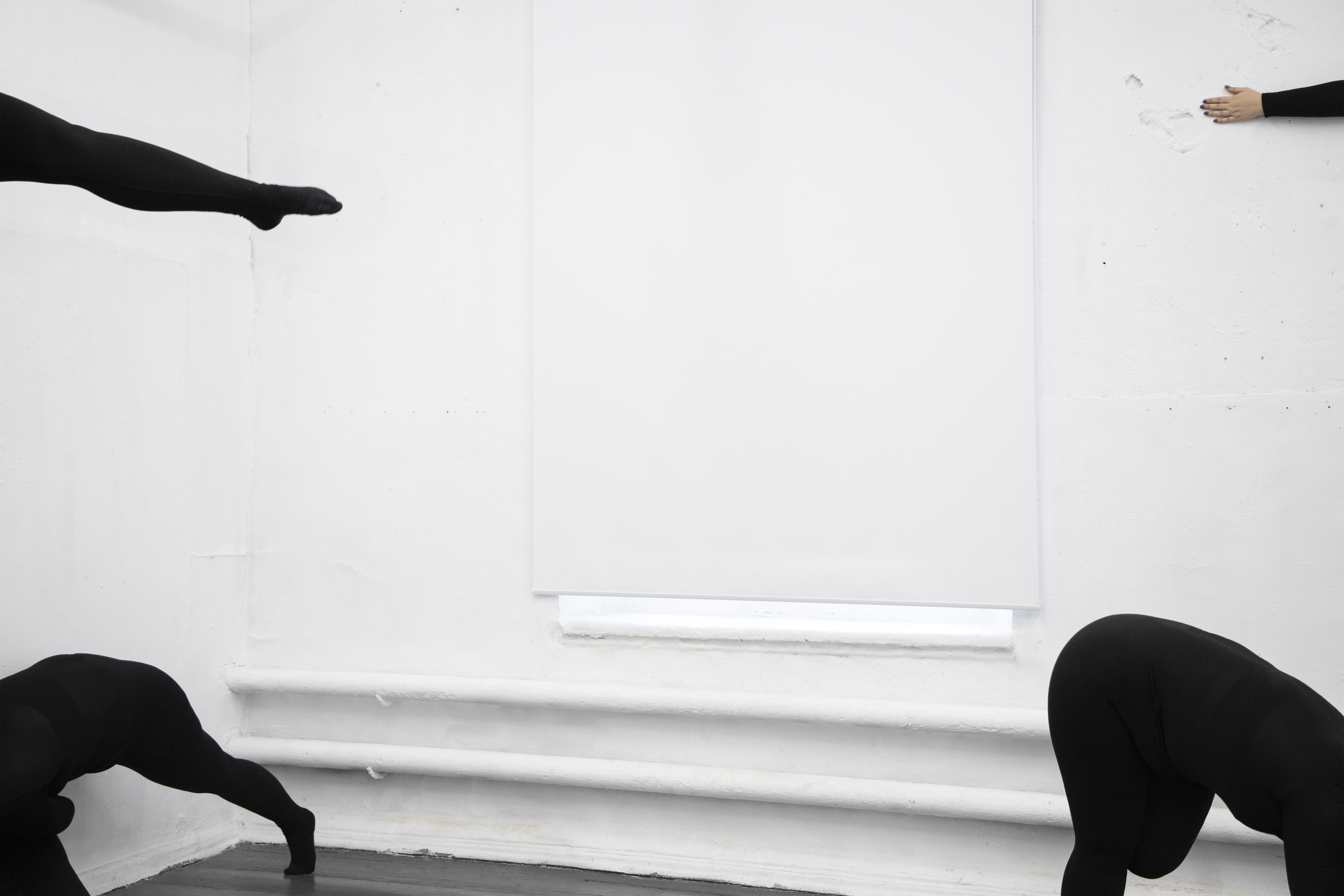
АК: In a sense the question "What do you do?" translates to "Who are you?". However, you do not always know it yourself or want to describe it. We do not have the freedom to think that professional identity can also be flickering.
АB: This flickering identity that is constantly forming has been a topic of many of my conversations over the past six months. For example, I lack the language means needed to talk about my own national or local identity. I do not know what it means to be a Russian person in Russia right now, or how to formulate this experience with everything that stems from it. It seems I understand better what it is to be a Ural person. But again, it is difficult to put what it means into words. What should constitute this “Uralism” of my own, which I often think about: the history of forced migration and colonisation of Ural, industrial development of the region, geological and economic exploitation of resources, taking advantage of people, mythology of Ural, and its poetics? I do not have language means to talk about this, at least not yet.
The problematics of language became all-encompassing for me with the beginning of the war. We live in a situation of language trauma, prohibition of words, and silence, when streamlined euphemisms are used to mask the most important ("when it happened", "in the current situation", "in the current circumstances"), even when we are in the relative safety of our close circle. These language problems became exacerbated not only in written and verbal communication. Artistic, visual language also requires revision.
Before the war, I compiled a list of "uncomfortable" questions for my project called Eurotour —the research I have been working on for the last two years [Eurotour is a project launched by Anastasia in 2019 and implemented together with Tatyana Pellenen and Olga Fedchenko. The subject of the research is the so-called Ural Europe —settlements in the South of the Urals, mainly in the Chelyabinsk region, bearing European names (for example, Kassel, Ferchampenoise, Paris, Varna, Leipzig, Berlin.) In the project, Anastasia studies the history of colonial processes and migrations associated with these locations and toponyms. Now Eurotour is at the research stage]. I looked at them and I thought "No, they are too uncomfortable, I cannot answer them now. I will put them aside for a while." Now there is no time. Now the difficult questions are the only thing I think about. How can I approach topics associated with the difficult heritage of the region and which have always been of interest to me from my perspective? How to work with them tactfully, ethically, without the rescuer syndrome and didacticism, the things that accompany any work with decolonial and postcolonial narratives? Many people are currently looking for a language to talk about this.
АК: Life in the capital is very different compared to the other regions of Russia, and, probably, this difference has become even more noticeable now. What is it like to be an artist who stays in their country, their region, and continues to work with the topics relevant to the latter?
АB: As strange as it may sound, I feel like the conditions I find myself in are better. I have never lived in Moscow so I can only judge by the mood of the artists and curators I know. From conversations with them, I got the impression that they feel more disconnected and alone; there are no platforms for constant communication, exchange, and support.
In Yekaterinburg, I feel the power of the community. Although it is thinning: at first people left in a hurry, some of them came back. Now there is a wave of those who are leaving consciously and for a long time. And yet there is a feeling that the Yekaterinburg art community (homogeneous and very diverse at the same time) is in solidarity, at least when it comes to its anti-war attitude. At first, everyone was numb, then there were attempts to unite people from different institutions and circles, now everyone has gone to their own little corner, but keeps doing a similar thing — creating communities of mutual support around themselves. I, in turn, hold meetings and exhibitions in my studio. For this purpose, I even created a ghostly gallery called "Guest" in it.
Ksenia Markelova and Nikita Perfiliev are launching their curatorial project "Temporary Solution" — a travelling gallery that opened on the 27th of October. Everyone understands the temporality and instability of their own existence, the flickering roles, spaces, and planes, and organises events in such a spirit. Many people from the artistic community have joined a volunteer movement and help refugees from Ukraine. I see how artists of Nizhny Tagil are actively engaged in the work of their temporary accommodation centre [at the time of publication, the centre was closed by the authorities]. In Yekaterinburg, different chats show how cultural workers and artists are doing volunteer work. Because of this, there is a general sense of cohesion.
АК: You are not planning to move, are you?
АB: Only to participate in the residencies — I have three upcoming ones in a row. For me, this is a point of tension: on the one hand, I am glad that there are such opportunities, at the same time I feel responsible. How can I use them not only for myself, but also to support others? Can I arrange an evening showing the works of the artists from Ural, use Kvartirale format to connect Ural region with other places where I am going to be? What can I do for the community from afar, having this privilege of travelling to a residency? At the same time, I do not want to leave Russia, and even more so Ural. This is my principled stance.
АК: I follow your Telegram channel where you wrote about this decision at the beginning of the war. It is a very strong position and it has influenced my decisions in its own way.
АB: I had this moment of panic when the first people from my circle started to leave, having less than a day to prepare. It was at the beginning of March, when there was a rumour about the imposition of martial law and general mobilisation. I was so struck by these departures that I sat down and burst into tears for the first time since the beginning of the war. I also had an option to leave with my friends, but I began to ask myself "Where would I go, why?" This reflection slowed me down and finally stopped me from moving. The next day I had a meeting with the artists in my studio, I looked at them and thought: "Why should I leave? If I leave, and they leave, what will be left here?"
I feel responsibility as an artist. My art has little impact on what happens globally, it does not influence thousands of people, but perhaps it can help someone to find means and tools to talk about the difficult, painful, unimaginable, and inexpressible. Now, more than ever, I realise how valuable this is. It breaks my heart that it took such a tragic event to finally understand this.
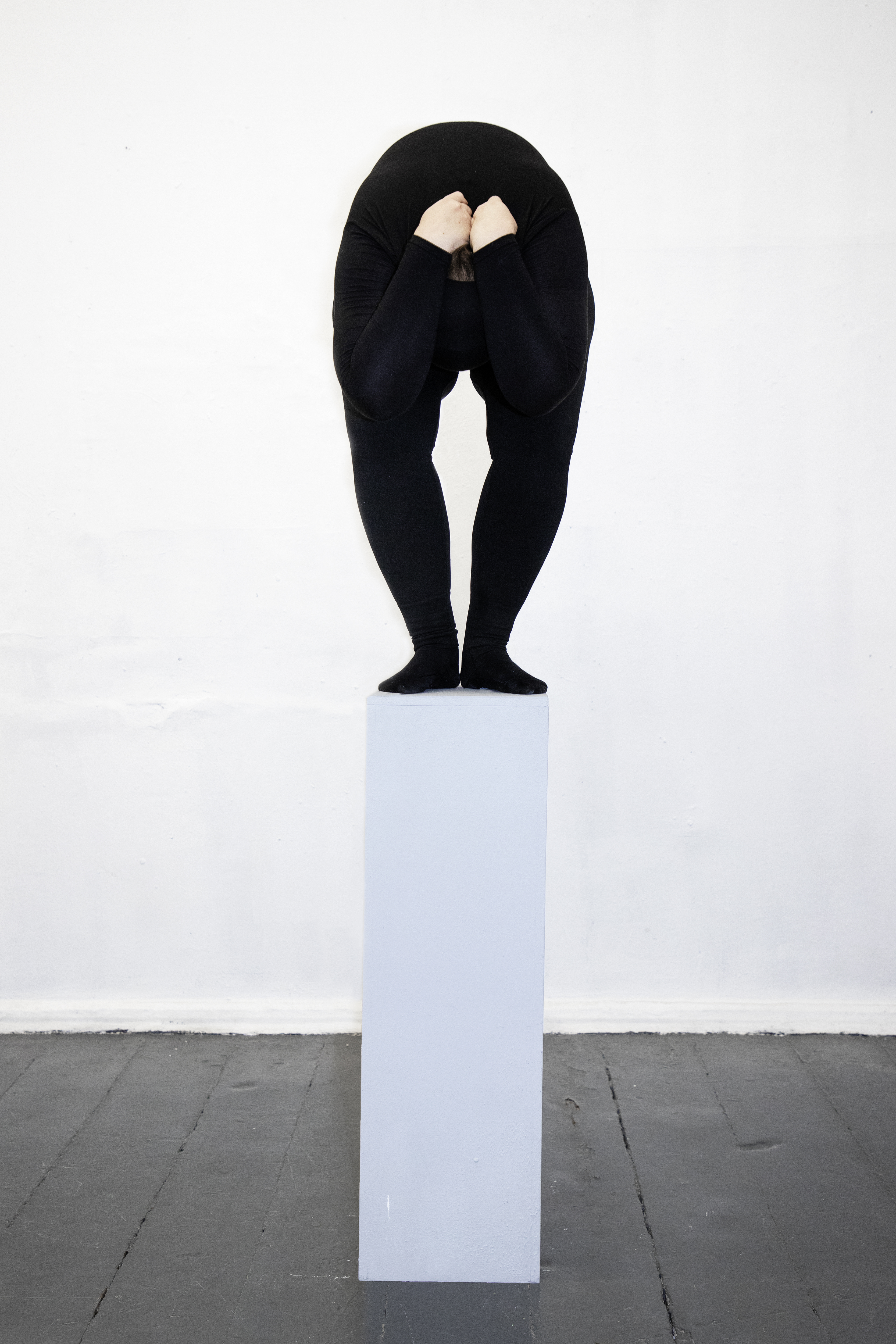
In 2016, I had a very important insight during a solo exhibition dedicated to Bakallag. At some point, a daughter of a repressed Russian German came to the exhibition. I do not know how she found out about the project, but it was obviously her first encounter with contemporary art. She spent two hours at the gallery, although the exhibition was small, went through the text several times, making notes in writing on the conditions in the camp. Apparently, she lost her father as a small child: he managed to survive the imprisonment, but died soon, so she did not have an opportunity to personally ask him these questions. At the exhibition, she encountered an artistic rethinking of this experience. She later visited my performance Shock-worker that took place in a stone quarry. It was rather short, but exhausting physically and emotionally. At the end, I was shaking and burst into tears. I saw this woman standing aside waiting for me, but did not find the strength to talk to her. Afterwards, she thanked me for the opportunity to be a spectator of the performance. It became a significant event in my artistic work.
It is due to cases like this that I became more aware of the responsibility for the topics I work with. We can talk through art not looking for words, but ways and actions.
I am becoming more and more convinced I need to stay in Ural: it is obvious that I will not be able to attune to this language from a distance.
АК: You choosing to stay influenced me and, I'm sure, a number of other people. The fact that your friends were leaving Yekaterinburg made you doubt and once again reflect on your decision. Your performance had such an impact on the person looking for an opportunity to get closer to the personal story of their father. Talking about responsibility: what we do affects others in some way. This gives hope that our actions, at least somehow, be it at least through echo, change the picture of the world around us.
АB: To me, it resonates with environmentally conscious behaviour. Six or seven years ago I first started practising separate waste collection in Chelyabinsk — paper and glass, the simplest fractions. I started this following an example of my friend, curator Sveta Shlyapnikova. She and her colleagues would collect hundreds of kilograms of waste paper in the museum, and send the proceeds to a private animal shelter. We joined the initiative, and then I started to do more waste fractions, sort plastic, stopped using plastic packaging etc. The task has become easier after relocating to Yekaterinburg since there are concrete environmental initiatives here. Over the years, I saw how the situation gradually changed. For example, thanks to Sveta sharing her experience, even those who were sceptical and considered separate waste collection nonsense at first are now sorting their garbage. The same thing happened in my circle due to the fact that I talked about it all the time, and refused to use plastic bags and used fruit bags instead so that others could see. Practice and knowledge were being passed along the chain, my friends saw that sustainable practices are easy.
This gives me hope that if we constantly say obvious things out loud, it will cause a change at least in our environments, which are, in turn, connected to others’, and knowledge can be transferred to those whom we do not know. It can make a difference in private life, feeling of security, and support. We cannot change the situation in the whole country. But I have warm feelings towards people who come with 50 bags of various waste to the Nemuseum of Garbage in Yekaterinburg, they give me hope. And if this logic is extrapolated to other areas, you can support yourself, and find a resource.

АК: There are artists in Russia who work with the topics of ecology and non-human agents, while there are very few of those who introduce the principles of respect for the environment into their own practice. Do you use any such methods in your work?
АB: In my work, I have three main directions. The first is related to the production of the new artworks. I can say yes to doing some prints on paper, but the production of previously beloved self-adhesives from floor to ceiling is already unacceptable for me — this is plastic that is very difficult to recycle, and it is used only once.
I think about how to make the production process of the exhibition more sustainable. Luckily, I have not had a lot of exhibitions lately, so I do not run into that problem often [laughs]. We recently discussed one potential exhibition for the next year for which my project To grow from the grass I love has been selected. Previously, it involved the acquisition of many new objects related to gardening, but now I am faced with the task of assembling this installation, if possible, from materials that were already used: the remains of wooden structures, gardening tools collected from friends or my mother’s garden. I will still have to print some photos, but for me this is as close as possible to the desired outcome.
The second direction is careful work with natural materials from the woods and other ecological zones within a framework of the Assemblage project. How can I leave a place from where I bring them, as well as a place I bring them to during the course of my work, unharmed? I am scared of throwing the environment off its delicate balance by doing what seems to be a harmless act. When I moved into my current studio, I brought all of my collections of branches, lichens, mosses there and, having gone through all of them, I discovered a colony of beetles in a bag of shelf fungi. At what point did they appear there, if a few months earlier, when I was going through my supplies at home, I did not find them? How many more of these micro traces have I left behind just by working on an art project? Am I causing a micro environmental disaster somewhere?
The third direction is combining my everyday approach to materials with artistic practice. For a long time, I have known that paper receipts cannot be recycled with ordinary waste paper due to their toxic composition, but it is still possible to make paper out of them. I began experimenting with this process this spring, wanting to distract myself with some mechanical work, but as a result I decided to make an artist’s book out of such paper named Total. For this book, I plan to calculate all of my expenses for the production of art over the past five years, starting from the moment I received the first scholarship for a young artist from the Garage Museum — it was then that I started collecting receipts to do the reporting on the grant. The habit of keeping them remained with me, and then the idea of an installation about the hidden side of artistic production was born, which turned into the idea of the book printed on paper made from receipts. In this work, alongside the idea of environmental sustainability, there is also my activist position that touches upon the problems of remuneration in the art field. The book can become a kind of document that I am ready to present — not without irony, of course — in every dispute when institutions and cultural initiatives offer artists symbolic capital little instead of a proper monetary fee.
АК: Do you feel like you are limited in what you can do because of your refusal to use self-adhesives or other common materials?
АB: Yes, but they make me look for other solutions. In many projects, I have worked with personal or public archives, ready-mades, and found objects. Naturally, I extrapolate the approach to using the existing material to the exhibition production. I do not know how this will turn out exactly, but in the current financial and technical conditions it is even logical. Although transportation still remains a problem for me: due to my day-to-day work, I cannot always afford slow travel, so I usually travel by plane.
АК: I will move on to another topic that is of interest to us in the context of the project — art residences. It makes sense to discuss it with you since you are one of the few artists who has in-depth knowledge of the topic. It seems to me that many people learn about the possibility to travel to art residencies from your Telegram channel — this is a great educational work. Why are you interested in this topic and what potential do you find in it for yourself?
АB: It feels weird to be in the role of an educator on the topic of the residencies since I have only been to two so far, and I am planning to go to another three.
About six years ago, my fellow artists advised me to participate in a residency. I did not understand why it was necessary, I did not have the motivation, so my applications did not bring any results. Back then I observed the experience of a residency forming in a municipal museum and saw what a huge stress it was for an artist. It was a type of production residency that resulted in an exhibition after a short stay. At the same time, the artist had to master the material, make a project, and immediately present it to the audience. I thought: "God, no, never, never. I cannot and do not want to do this, I work slowly."
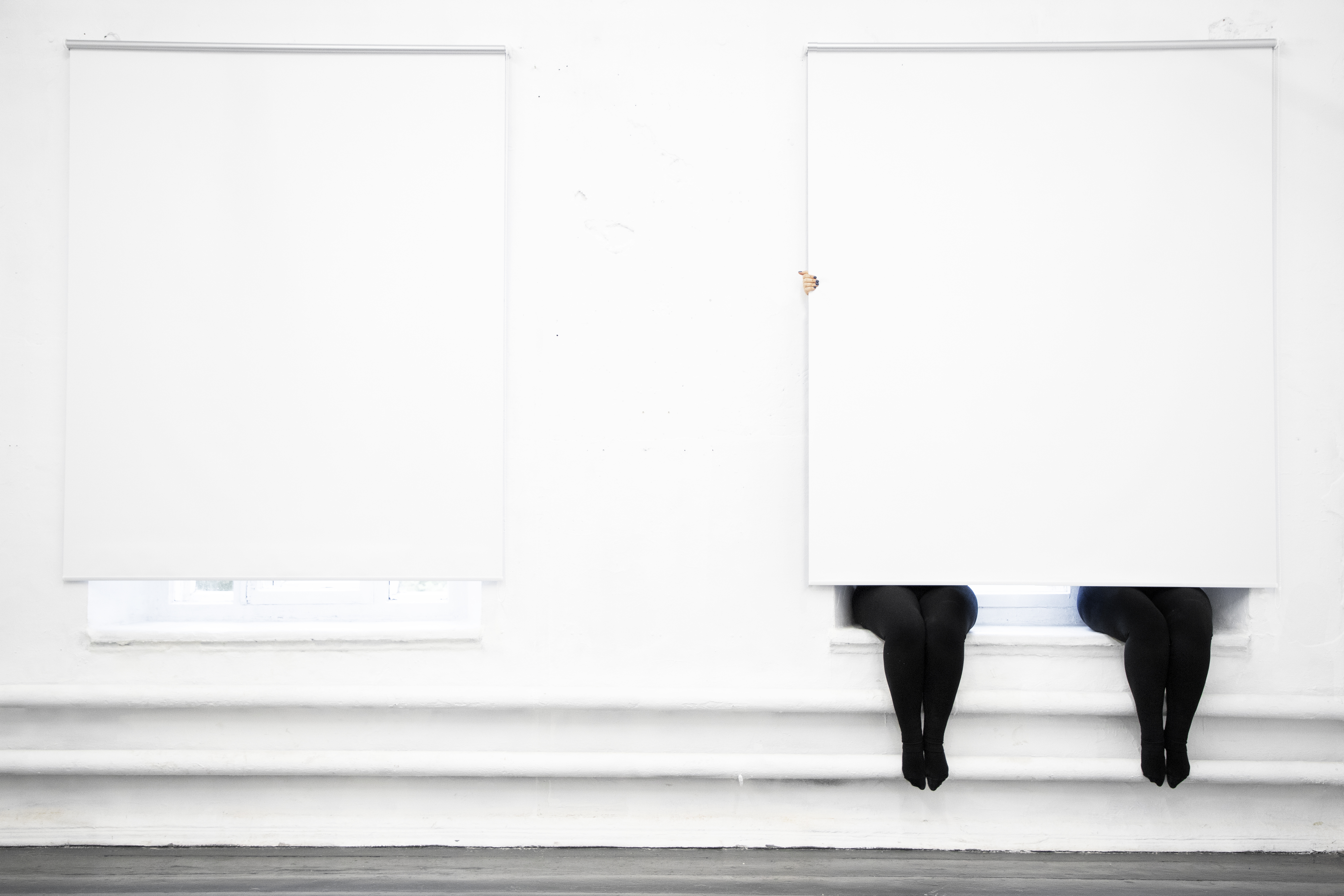
I learned that there are other types of residencies after having applied and participated in an art residency in Switzerland in 2019. Even though I went to a specific place for a specific artistic research, I was not required to produce any report in the form of an exhibition in the end. I was free in my search, and this was the most important emancipatory experience for me as an artist. Although, I must admit, this liberation had a downside: it was hard to return to the old routine.
The next residency, The Shishim Hill in Yekaterinburg, showed me that residencies can be a tool for internal growth. It enables you to concentrate both on this growth, as well as on a specific project. I began to think of art residency as an educational environment, a platform to reflect on your artistic practice without a need to finalise the process, a space for exploration, taking a step back and reflecting on your position. That is why residences fascinate me so much. I do not think that other platforms have such a potential for the development of an artist. Maybe there are such tools within the educational system, but most likely outside of Russia.
I choose residencies that are respectful towards artists’ time and rhythm. A residency in Denmark where I am going to next year focuses on entering the community. In addition, the co-organiser of the residency is Danish Art Workshops — it gives an opportunity to master real skills in a new community. This can be a valuable experience. Another residency in Switzerland is focused on research. It allows you to work at your own pace. When there is no pressure, I am happy to do something extra — an event, a show, open studios — because I feel the conditions are comfortable. You can think, walk around, be alone, talk to people, and reflect on your own practice.

АК: Perhaps, from within the Russian context, it seems that residencies are all about making a short trip, doing production at a fast pace, and donating your artwork to a residency’s collection. In this regard, your channel is very important because you make people aware of the alternatives.
АB:There is a feeling that most art residencies exist only for the sake of the result that can be reported. As an artist, the result is not very interesting for me — I exist in the process. I believe that this process can be shared with the viewer because if you are passionate about your topic, you can captivate the audience with a story about it.
АК:Reporting is important to an organisation. The system of art institutions in Russia does not imply freedom in this respect — even private residencies need to justify why they are important and needed, report the quantitative indicators and how many new artworks they have in their collection.
АB: Before the first Forum of the Association of Art Residences, I had no idea that the field of Russian residences was so distorted.
АК: And yet there are some positive developments, and this is partly due to the forum. With regard to the distortion, I think that the reason behind it is that the voices of artist associations or organisations that understand the nature of artistic work and could explain why its results should not be alienated, are not fully heard. It is important to voice disagreement out among artists and residency organisers. For you, in this Telegram channel, this seems to be quite a battle — I saw a discussion evolving around the fact that some residencies do not pay artists for their works, arguing they provide them with symbolic capital.
АB: Sometimes I give up, I do not have the strength and resources for it. The funny thing is that when I meet artists in real life, outside of Telegram, they say: "We read what you posted, and we could not agree more." But no one ever writes a comment in support of my position!
Some artists still participate in the residency "for food", justifying it in different ways. I recently came across this as a justification: residency is something frivolous, you go there to relax, break away from your routine. And I thought: if the residency treats artists this way (it gives one and a half to two weeks and does not cover any expenses except for food and accommodation in a glamping), and the artist is satisfied with this, then perhaps I do not need to even have this battle. Is this an ideal working scheme? Maybe for someone else, but definitely not for me.
АК: You are going to three residencies soon. What are your expectations from them, have they changed?
АB: I definitely expect that I will be working according to the plan in the Swiss residency, only adjusting the meeting schedule. I do not know yet what to expect from Denmark, although in my application I specified that I would like to study a specific territory and communicate with researchers. The residency in Sweden is a continuation of the exchange programme I have been participating in since 2021. Probably it will be the most hasteless work. I would like to use the time to scan the archives and territories, and discover small local history museums.
Uncertainty in my expectations is caused by the ongoing events. On the one hand, I feel inspired by the opportunity to communicate with curators, artists, researchers, and see different exhibitions. On the other hand, my thoughts constantly return to the war, and the current plans for the art projects seem either irrelevant or not fitting the moment. I cannot accept what is happening as the norm, and it takes extra effort to continue working and finding ways to speak out on difficult topics.
If there is an opportunity to rethink one’s practice and its language in the conditions of war, among others, then the residencies still remain a platform for me to continue looking for this language.
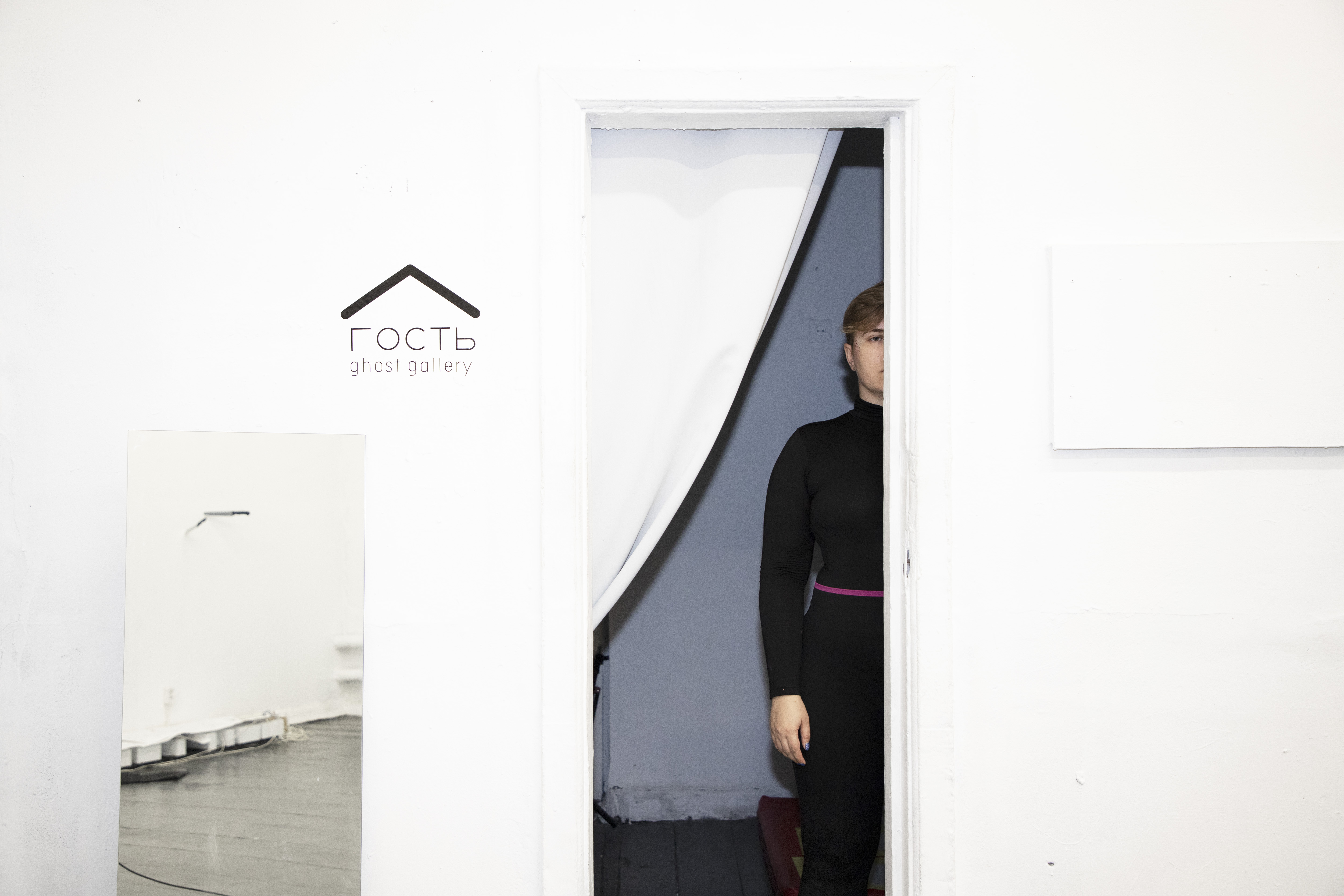
АК: As our conversation is nearing its end, could you tell me about the studio based in the former NCCA Ural that hosts the ghostly gallery "Guest"?
АB: The idea to start the gallery was inspired by Ural Kvartirale that happened for the second time this spring. Kvartirale is a series of tours around studios, apartments, and other private spaces such as basements and garages that host art exhibitions. This year, some plans remained unfulfilled: someone left the country, so others lost the venue and opportunity to display their work. I invited one of the artists who ended up in such situation, Ksenia Markelova, to my studio space. We do very different things: Ksenia works with textiles, silicone sculptures, and graphics. But we both address the topic of transformations and bodily modifications, so I proposed to bring my project Assemblage and her sculptures and graphics together in one space. The result was interesting, I think.
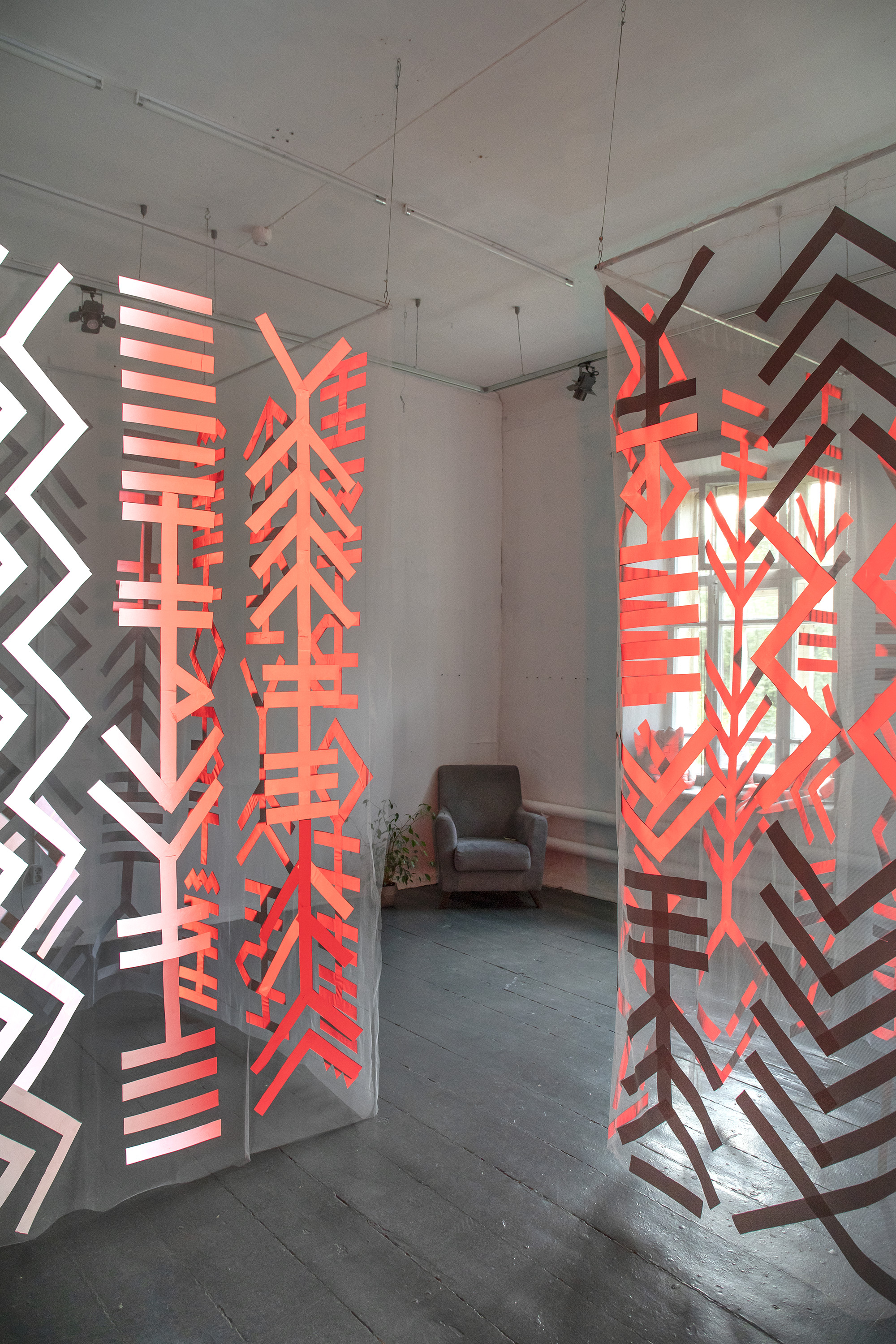
By that time, after the outbreak of war, I already started organising meetings in my studio. This was a way of support for me and my guests. I do not know how I would have survived this time if I did not have to get out of bed every morning and come to the studio no matter what. I decided that it was logical to share this space. This is how the idea to create the gallery emerged. (The idea was not entirely mine: media artist Andrey Chugunov was working in a studio next to mine back then, and he created a nomadic sound gallery Void that could appear in any space). Since everything is flickering, temporary, and incomprehensible now, why not make a gallery and continue the discussion around the topic of hospitality that we started at the conference in Vyksa? I thought it was witty to call it a ghostly gallery (Гость (RU) /Gost' — Ghost — Host). By the end of May, I had finished with shooting for Assemblage. We opened the first exhibition in June-July, the second one in August, and the third and final exhibition in September. This was such a mini-sprint.
АК: When your rental agreement for the studio space expires, are you planning to move the ghostly gallery somewhere else?
АB: I am thinking about it. Yesterday, I read an interesting post about APTART — an apartment gallery in Moscow with exhibitions tailored for a specific space. My apartment is very small so it will be difficult to turn it into a gallery, but I will think how to deal with this [at the time of publication, Anastasia's stay in the studio was extended. For the duration of her Swedish residency, a “ghostly residence” will be opened in the studio on the topic of “How many empty shells are there for one inhabited one?”. An invited artist will be working in the space; an open studio is planned for December].
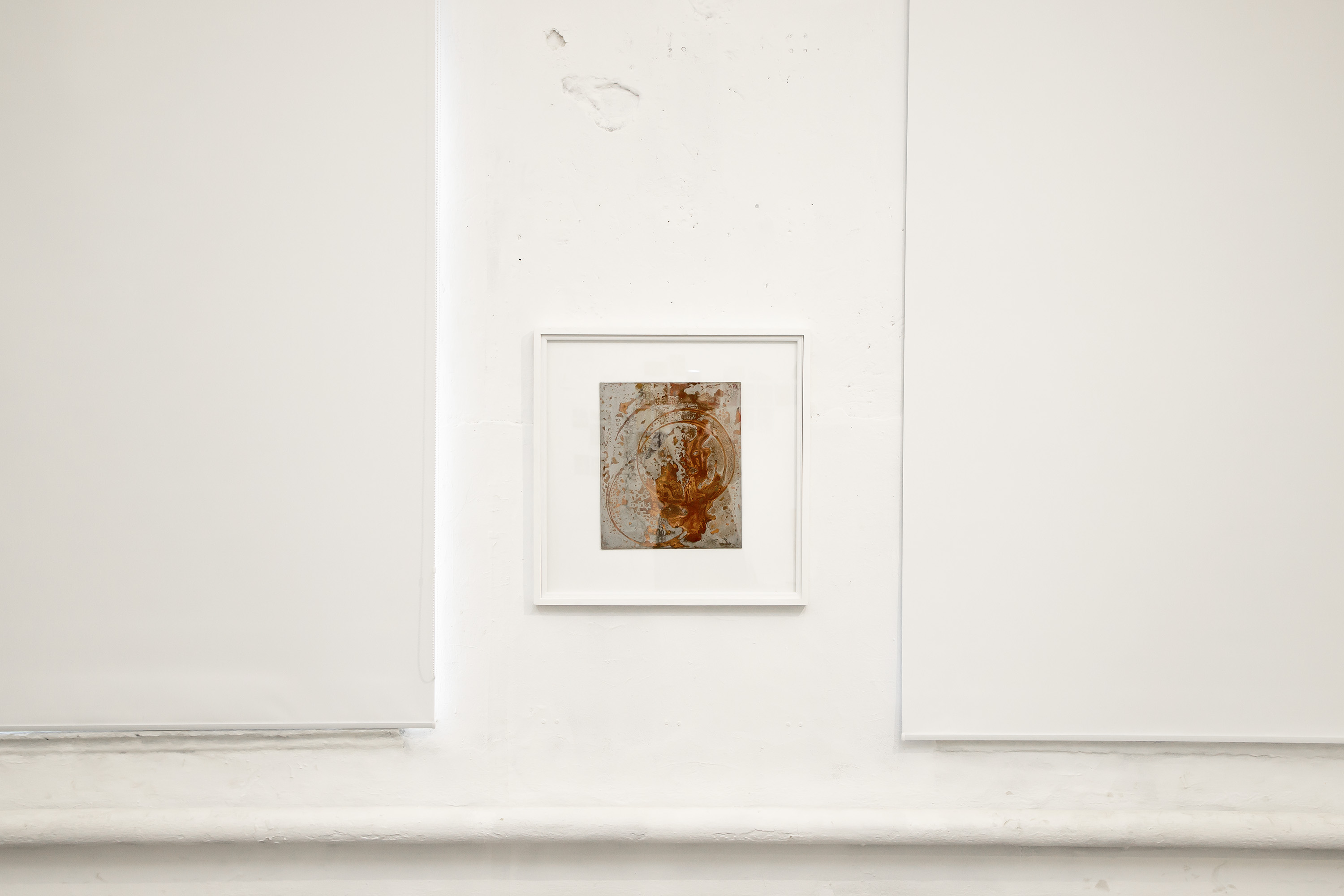
АК: We once discussed collectivity that is developing in your gallery, and you mentioned that it has an analogy with residencies.
АB: The format here is hybrid and quite strange. I am a guest in the studio offered by a museum, and I provide a space for dialogue to other artists. We sign a hospitality agreement, according to which invited artists are free to show their works. The only specific condition in the agreement is that they let me, in some way, enter a dialogue with their works.
At Anastasia Pishchugina's exhibition Aphasia I made a sound installation inside one of the objects. You could listen to it, making it a continuation of the artwork, or you could simply ignore it.
At the exhibition of Anna Snegina, I contributed with a soundwork from my previous project Under the dome. It was a modified, constructed sound of a meteorite fall. We set the volume to maximum for it to be in contrast with Anna's work that was about aestheticizing the destruction that iron creates through rust. They were sealed in the white frames, and a space of a white cube was formed, surrounded by this alarming, catastrophic sound.

Anastasia Krokhaleva's exhibition is a work within a work within a work, a kinetic installation and a zine in which she gathered non-environmental feedback on her project. My contribution to this dialogue is knives engraved with quotes from the real guest books.
This exhibition format is a way to expand and continue the conversation about art with the audience, using artworks as keys to start the reflection on the topic. In a sense, my role — and I just realised this — is not being an accomplice, like-minded person or guest in relation to the work of another artist, but being a facilitator or mediator. This is an exciting interaction; sharing a space with the artists who make completely different things, but still being able to find common ground.
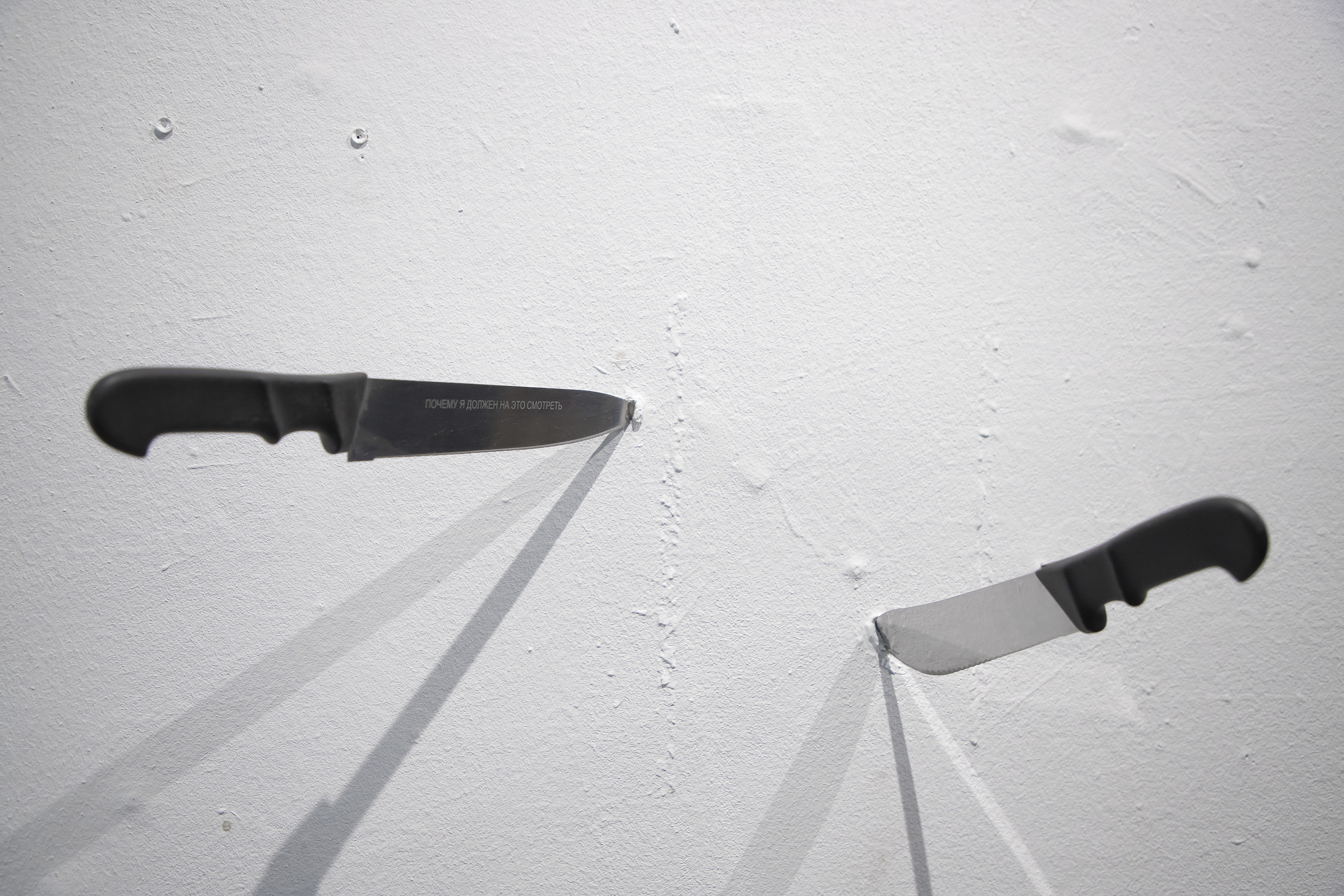
АК: You mentioned mycelium or weeds as an analogy to the community around the gallery. I enjoy this metaphor: you do not exist as one on the surface, but there is an invisible connection between you underneath.
АB: It is harder to damage the mycelium — you need to burn down the entire forest.